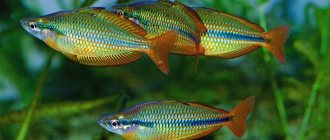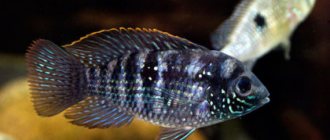Today we’ll try to take a closer look at one of the available options – a ceramic water filter. Ceramic water filters are generally affordable and versatile. There is a large selection of such systems, ranging from small indoor desktop systems to large portable ones.
It is also important to clarify that this type of filter is not necessarily suitable for your specific water filtration needs. If you're looking for a new water treatment system for your apartment and a ceramic filter seems like it's what you're looking for, you should contact Customer Service for help making your final decision. This ensures that you get the best system at the best price to meet your needs!
What are ceramic water filters made from?
It should be noted that the exact composition of the filters may vary. But typically, ceramic water filters are made from fine silica powder, originally formed from the cell walls of microscopic algae deposited in lake sites millions of years ago.
This prehistoric sediment is known as diatomite or kieselguhr. Today, there are more than 1,500 uses for this material, including as a polishing agent in nail polish and as an insulator in ovens. Diatomaceous silica is fired at high temperatures to create ceramic cartridges or ceramic filter candles.
What are aquarium filters for?
Aquarium filters come in different varieties, from budget to very expensive models. In order not to get confused in all this variety and choose the most suitable filter for your aquarium, you should know about popular types of devices, types of filtration, etc.
There are different types of aquarium filters
On a note ! The filter removes various contaminants by passing water through a layer (or several layers) of filter material. As a result, the water becomes clean, odorless and without small particles. But much more important are the processes occurring at the microscopic level and relating to the life of beneficial bacteria , which over time populate the surface of the filter material.
When organic waste (excrement, food debris, etc.) decomposes, water inevitably becomes contaminated with hazardous substances, and beneficial bacteria are responsible for processing them into safer ones. Thus, the aquarium filter helps maintain optimal living conditions for the inhabitants of the closed aquarium ecosystem.
Aquarium filters
What type of bacteria and contaminants can ceramic water filters remove?
The type of contaminants and bacteria that a ceramic water filter will help get rid of depends on the brand and model. However, ceramic filters and replacement cartridges can typically remove up to 99% of pathogenic bacteria. This includes salmonella, cholera coli and E. coli, as well as cysts including cryptosporidium, various types of sediment, organic chemicals and lead.
The best part is that a ceramic filter, like most water filters, will keep your drinking water virtually taste- and odor-free for its entire lifespan!
Types of biofilter fillers
For modern biofilters, various types of fillers are used. Each of them has its own characteristics:
| Type of filler | Description | Note |
| Sintepon (foam rubber) | one of the most common, this filler is universal and also provides mechanical cleaning; it is usually used for internal filters | not suitable for large aquarium tanks, as it cannot cope with increased load and immediately becomes clogged |
| Bioceramics | often used as a basic filler for biological filters and is already included in the kit, usually used for external biofilters, there is no mechanical cleaning | actively sprays oxygen, the bioceramic filler does not retain dirt, which ensures long-term operation without rinsing |
| Plastic balls | have a ribbed surface in which microorganisms accumulate | not as effective due to too small area of bacteria colonization |
| Porous glass | created using special technology and consists of small balls with a volume of 8-12 mm | ensures rapid growth of beneficial bacteria, innovative material |
Do ceramic filters remove fluoride?
Some special installations of ceramic water treatment systems will help reduce the amount of fluoride.
The most recommended installation for this purpose uses the system, candle and cartridges from Dolton: W9380001 Undersink Water Filter System, W9123053 Filter Candle and W9125030 Specialty Replacement Filter Cartridge. This system, candle and cartridge can be ordered online or by phone from the customer service department.
If you are concerned about fluoride in your drinking water, it is recommended that you also consider one of the water filtration systems that are designed specifically to remove fluoride. This includes a water filtration system using reverse osmosis.
Types of filters by installation method
As we just found out, electric filters can be installed both inside and outside the aquarium. External models, in turn, are divided into mounted and canister models.
Internal filters
The most popular devices that provide effective cleaning at an affordable price. Despite the fact that the most powerful models are designed for aquariums up to 500 liters, this is quite enough for most aquarists. Such filters are compact and almost do not reduce the volume of the aquarium. In large tanks they are used for additional filtration in tandem with external devices.
Internal filter
Note ! The principle of operation is based on the fact that the built-in pump creates a stream of water that is reflected from the walls and raises suspended particles. The latter, in turn, are absorbed by the filter.
The most effective internal filters are considered to be “glasses” (closed models). Their productivity is limited (no more than 200 liters), but their efficiency is quite high. There are also filter heads, air lifts, etc., but we will talk about them below.
Airlift options
External filters
They have high productivity, so they are installed in aquariums with a volume of 150-1500 liters. As you can guess from the name, such devices are installed outside. Using a hose, water from the aquarium is supplied to the external filter and, after passing through all layers of filler, returns back through the second tube. The advantages also include reliability, a full filtration cycle, ease of operation and durability. There are only two disadvantages - high noise level and size.
External aquarium filter
Who makes ceramic water filters?
On the website you can find ceramic filters from several leading manufacturers.
Crystal Quest ceramic filters are conveniently sized for desktop use. Several Katadyn water filters are also ceramic. They range in style, from pocket-sized microfilter systems that are great for casual backpacking trips, to substantial camping filters that are made for longer expeditions.
The most popular offerings are from the Dolton line of ceramic water filters. This line includes more than a dozen cartridges and plugs that can be used for several types of systems, including gravity-fed systems and sink filters. The company also offers parts and accessories, including O-rings and sink filter wrenches, to help you easily secure your filter into its seat.
How to choose a biofilter for a home aquarium
Modern aquarium farming offers a wide variety of ready-made devices that guarantee high-quality cleaning of the container. Of the entire huge range of biofilters, it is worth highlighting a few that have proven themselves the most.
When choosing the required design, take into account the performance of the biofilter - the best devices are those that show a performance of 2 full volumes of water per hour of operation.
Aquael brand equipment
Aquael is a Polish company that produces budget biofilters. But, despite the affordable price, this equipment is famous for its powerful performance and has proven reliability and quality:
- biofilters from Aquael are designed for cans of 100-700 l;
- the most powerful units are equipped with 2 pumps and 4 hoses (working for the inlet and outlet of a water jet), which allows you to achieve a good flow;
- Bioballs or ceramic rings are usually used as fillers.
Tetra-EX brand equipment
One of the most famous and popular manufacturers of aquarium equipment and accessories.
The German company meets the highest quality standards, and all their products undergo careful control and technical testing:
- biofilters from Tetra-EX are designed for cans with a capacity of 60-500 l;
- standard equipment includes biological balls and ceramic rings;
- Each device has instructions that describe the rules for assembly and installation.
All supplied fillers must be washed under running water before placing them. By the way, this applies not only to Tetra-EX equipment, but also to other brands. After all, during transportation, dirt and microscopic fragments settle on them.
In order for the Tetra-EX biofilter to be in working condition, the aquarist must independently create the necessary draft. This is done using the paging function (the button is located on the top of the case).
JBL brand equipment
Another equally famous German manufacturer of aquarium equipment. This company specializes in economical filters with a budget pricing policy. All models use bioceramic filler with a mechanical cleaning function.
What are the most common uses of a ceramic water filter?
Ceramic water filtration products are available for home and outdoor use. In the home, ceramic filters can be located under the sink or on the table, for example, ceramic filters from Pentek.
Outside the home, ceramic filters offer the added benefit of being used in a gravity fed water system that does not require electrical power or manual pumping to function. This can be an ideal choice for use in the desert or in emergency situations where clean and safe water is scarce and electricity is unavailable.
Based on materials from: blog.waterfilters.net
The benefits of biofilters
Every home aquarium contains organic matter - it is left by the aquarium inhabitants. The decomposition of the remains of vital activity and foliage of aquatic plants, uneaten food and gas exhaled by the inhabitants leads to the release of ammonia.
Ammonia compounds pose the most important threat to aquarium inhabitants; ammonia is destructive to all living organisms.
Ammonia concentrations as low as 0.2 mg/l lead to the death of aquarium fish. And for many of their varieties, this indicator becomes destructive even when it decreases by 10-12 times. You can combat the formation of ammonia in other ways - for example, by regularly changing the water. But keep in mind that such manipulations:
- become a source of serious stress for fish;
- do not show effectiveness (after all, water is usually changed once a week;
- can destroy the fragile ecological balance.
The best and safest method for removing ammonia is beneficial microorganisms. Bacteria oxidize ammonia compounds and convert them into nitrites and nitrates.
Nitrates in high concentrations also harm the inhabitants of the jars, but these compounds become a nutrient medium for aquatic plants, which consume them.
There are two types of beneficial microorganisms that are effective as natural cleaners of aquarium water. This:
- Nitrifying. Microorganisms involved in the oxidation of ammonia compounds. After processing, ammonia is converted into hydroxylamine, which is subsequently converted by bacteria to nitrates and nitrites.
- Nitrobacteria. Microorganisms that process nitrites. The result of their activity is the appearance of nitrates. These substances are not harmful to fish and are absorbed by aquatic plants.
Biofiltration principle
Biological filtration occurs in several stages:
- Fish and other aquatic animals leave behind their waste products.
- Waste (remains of food, leaves, feces) decomposes and releases ammonia compounds.
- Beneficial microorganisms process ammonia.
- The nitrates formed after processing are absorbed by aquatic plants.
As the aquarium goes through the nitrogen cycle, bacteria begin to form on their own.
Microorganisms live in the aquatic environment, on the walls of the container, decorations, and soil.
Bacteria maintain and correct the eco-balance. But situations arise when there are not enough colonies of important microorganisms, which leads to an increase in ammonia and poisoning of aquatic life.
When such a situation arises, the aquarist is faced with the task of propagating beneficial denitrifying microorganisms. It is necessary for their populations to grow to large sizes and be able to cope with increased bioburdens. To strengthen and expand a colony of bacteria, three conditions are necessary:
- Favorable material (substances) for their residence.
- Oxygen.
- Proper filter care.
The principle of operation of an aquarium biofilter
The biofilter is found in various modifications. These devices may differ in the type of filler, body features and other technical characteristics. But regardless of the type of biofilter, all such devices work on the same principle:
- A special filler is placed in the device’s container. It has a porous structure, favorable for the colonization of bacteria.
- A hose equipped with an additional element (usually a compressor) is connected to the housing. The hose creates a simulated flow.
- Aquarium water enters the biofilter and is purified by beneficial bacteria.
- At the outlet of the filter, the water is already purified and safe for aquarium inhabitants.
- The nitrates that remain in it are absorbed by aquatic plants.
Difference from other types of filter systems
Nowadays, consumers are provided with a very wide choice of drinking water purification systems:
- reverse osmosis filters;
- cartridge;
- ozone;
- ceramic.
Let's compare the effect of a ceramic filter with other types of devices.
- The reverse osmosis system ideally copes with the task of purifying water and removes from it all substances harmful to the body, but, unfortunately, it does not allow useful substances to pass through either, practically turning it into a distillate. The ceramic filter device allows you to retain harmful impurities without depriving the water of beneficial salts and minerals.
- Cartridge fine cleaning systems, like ceramic ones, purify water efficiently, but unlike the latter, they require regular replacement of expensive cartridges.
- When choosing an ozone filter, you must be especially careful, since undecomposed ozone is dangerous to human health. In addition, the ozone filter only disinfects water, destroying all types of microorganisms, without purifying it of impurities.
Unlike the above installations, ceramic filters have many more pros than cons. They have only one drawback - quite high cost.
USEFUL INFORMATION: How to assemble a water supply system from metal-plastic pipes with your own hands
Choice of power and performance
When choosing an aquarium filter, you should consider its energy consumption . The best option is no more than 10 W. If the aquarium is large, you can purchase a model with a power of up to 16 W. Although, if you consider that the device consumes about 10 kW per month, there will be almost no difference.
Calculation of aquarium filter power
As for productivity , it will depend on the volume of the aquarium. It is important that the flow rate of water passing through the filter device is at least 3 times the volume of the tank. For example, if your aquarium is 200 liters, then the filter capacity should be at least 600 liters per hour.











